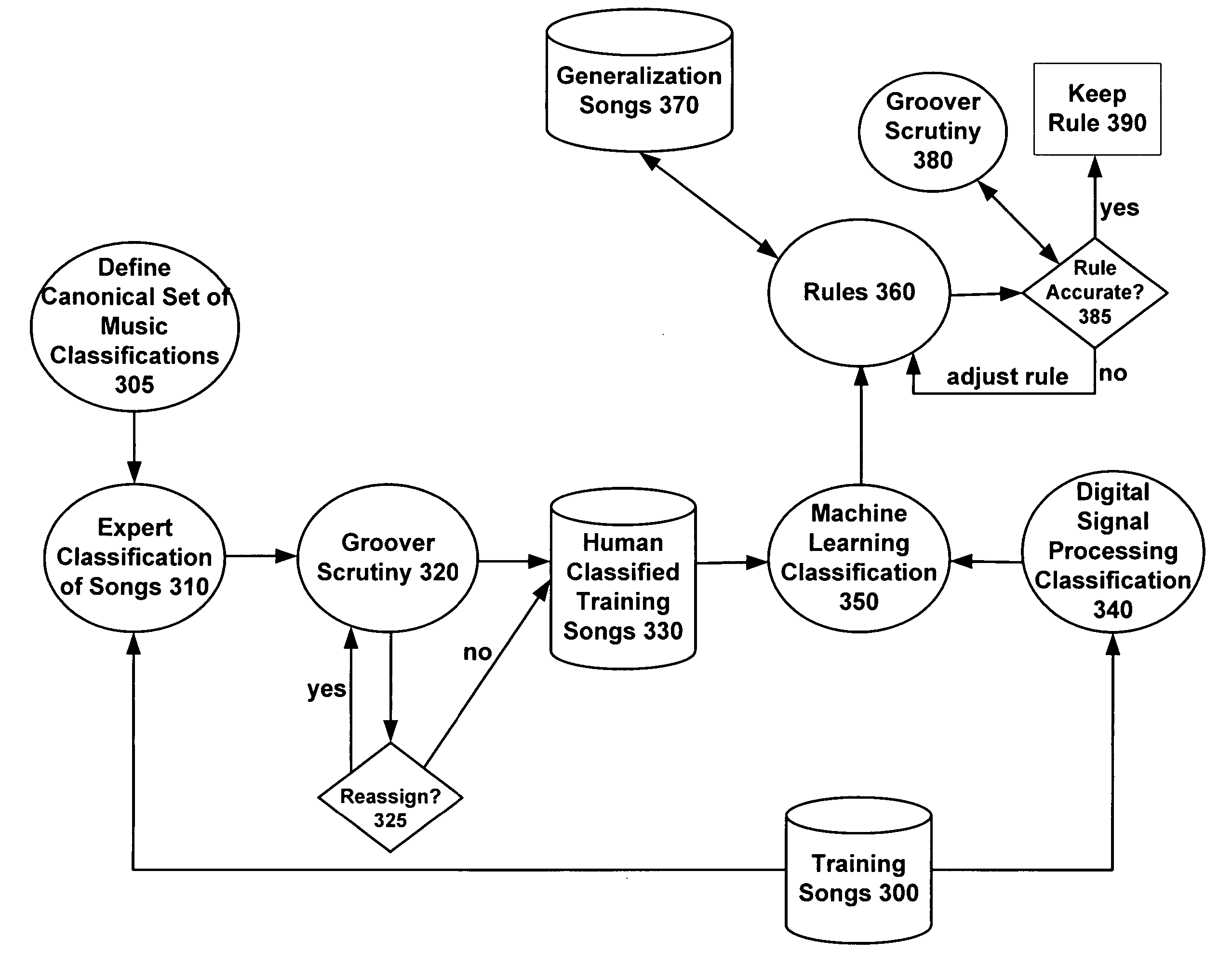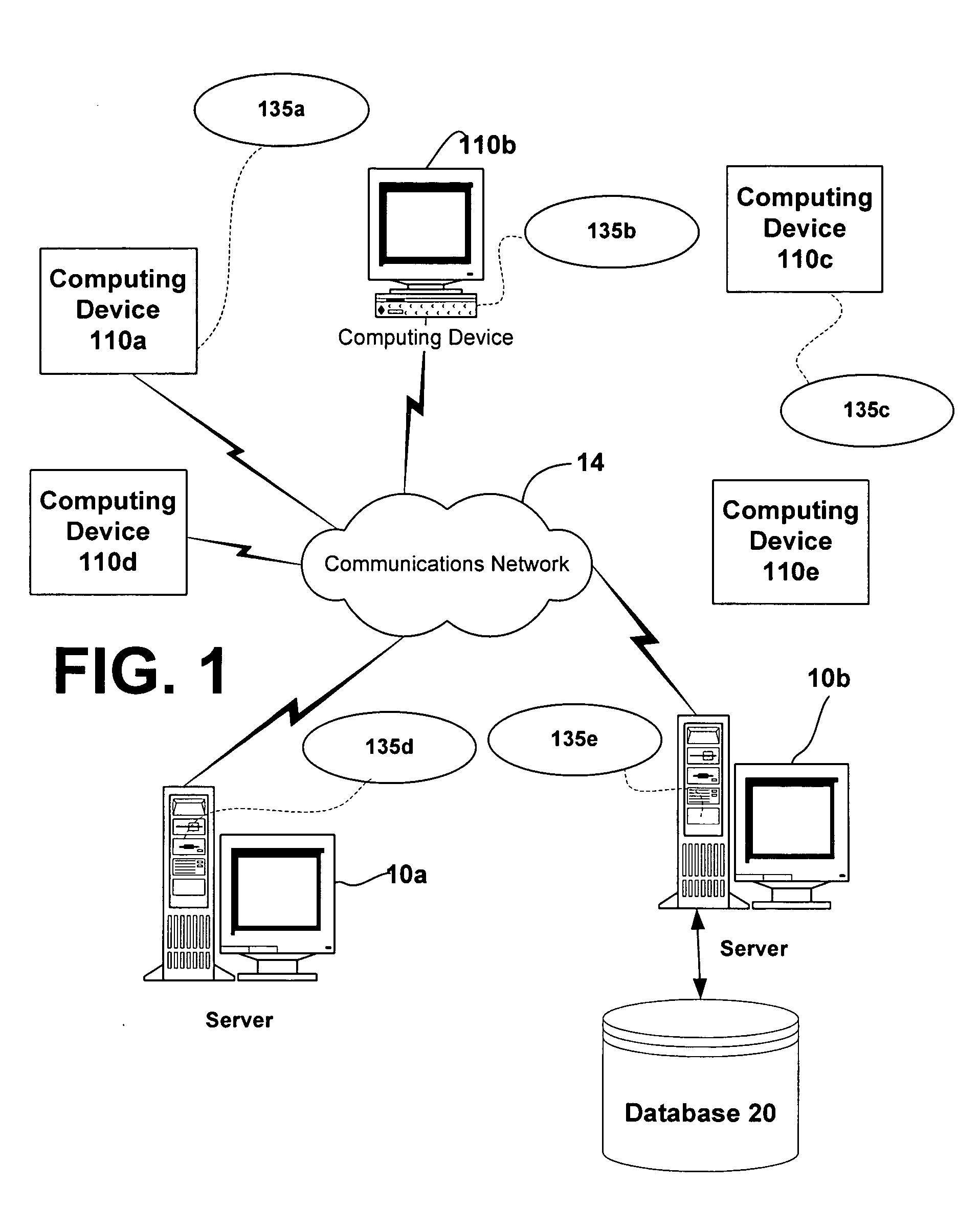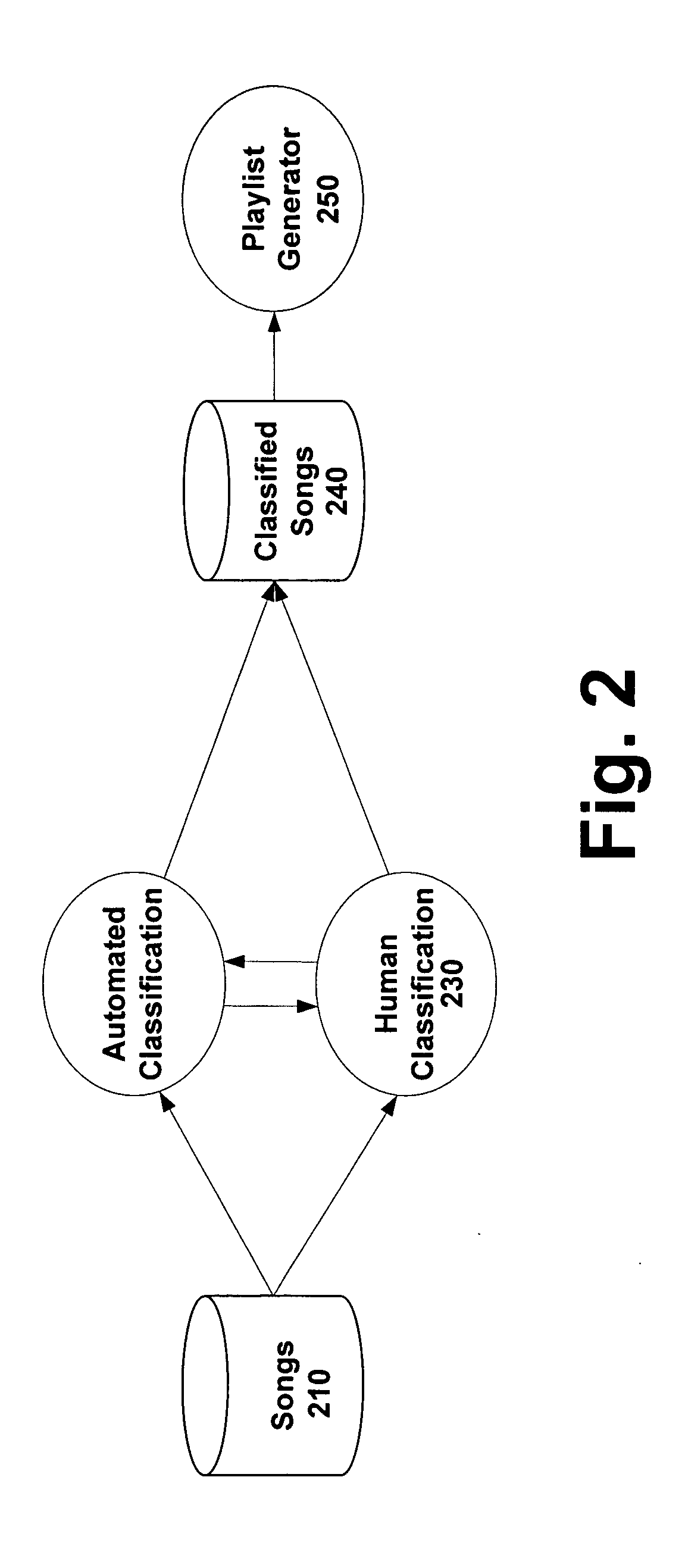System and methods for providing automatic classification of media entities according to consonance properties
a technology of automatic classification and consonance properties, applied in the field of automatic classification of media entities, can solve the problems of no consistent, concise, agreed-upon system for such annotations, difficult classification of information that has subjectively perceived attributes or characteristics, etc., and achieve the effect of improving the classification of media entities
- Summary
- Abstract
- Description
- Claims
- Application Information
AI Technical Summary
Benefits of technology
Problems solved by technology
Method used
Image
Examples
Embodiment Construction
[0046] Overview
[0047] With respect to a classification system for classifying media entities that merges perceptual classification techniques and digital signal processing classification techniques, the present invention provides a system and methods for automatically classifying and characterizing musical consonance properties of media entities.
[0048] Such a method and system may be useful in the indexing of a database or other storage collection of media entities, such as audio files, or portions of audio files. The methods also help to determine songs that have similar, or dissimilar as a request may indicate, consonance by utilizing classification chain techniques that test distances between media entities in terms of their properties. For example, a neighborhood of songs may be determined within which each song has a similar consonance.
[0049] In exemplary embodiments, the invention includes a peak detection and interpolation phase, a scalable critical band masking or filteri...
PUM
 Login to View More
Login to View More Abstract
Description
Claims
Application Information
 Login to View More
Login to View More - R&D
- Intellectual Property
- Life Sciences
- Materials
- Tech Scout
- Unparalleled Data Quality
- Higher Quality Content
- 60% Fewer Hallucinations
Browse by: Latest US Patents, China's latest patents, Technical Efficacy Thesaurus, Application Domain, Technology Topic, Popular Technical Reports.
© 2025 PatSnap. All rights reserved.Legal|Privacy policy|Modern Slavery Act Transparency Statement|Sitemap|About US| Contact US: help@patsnap.com



